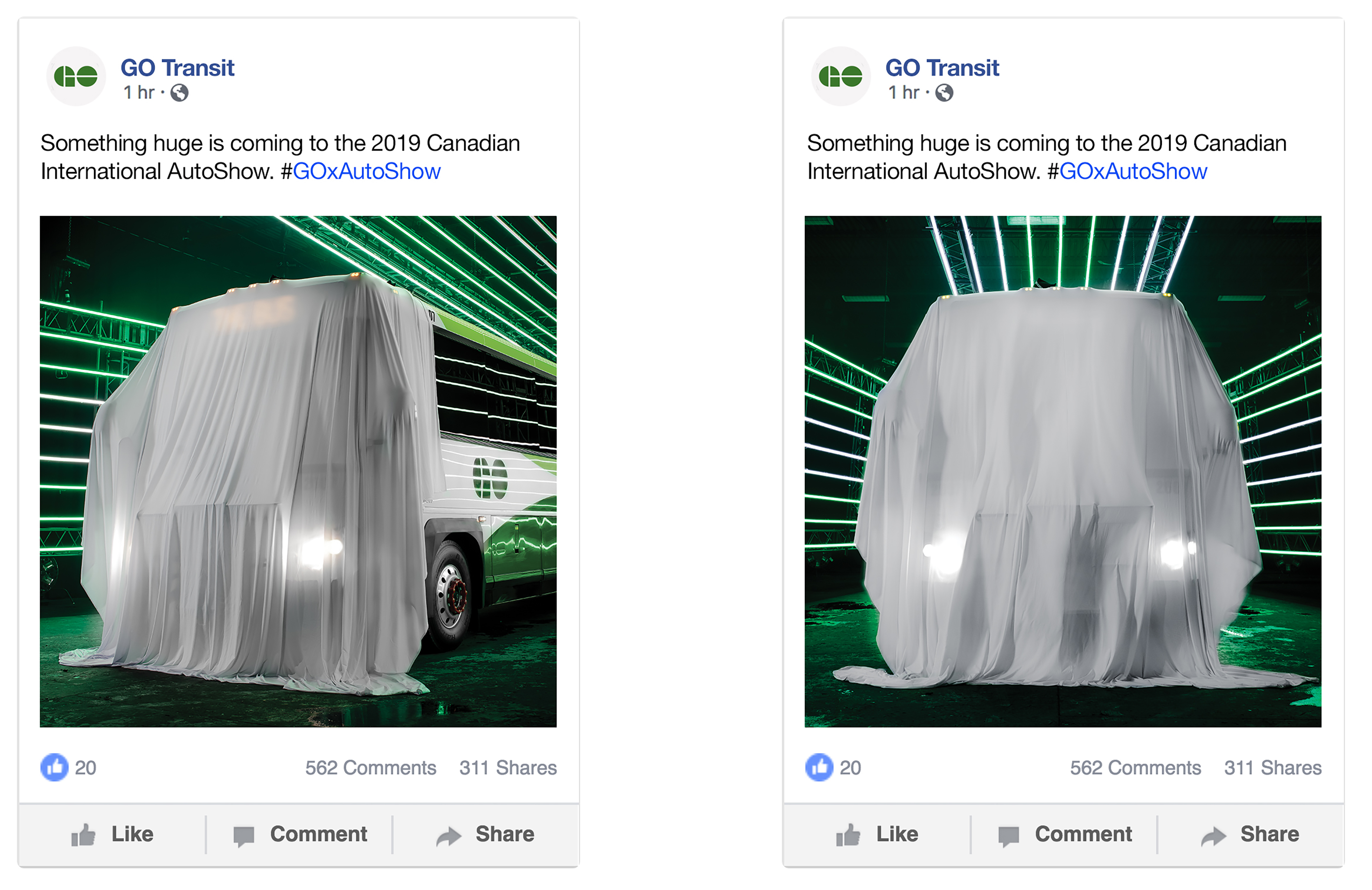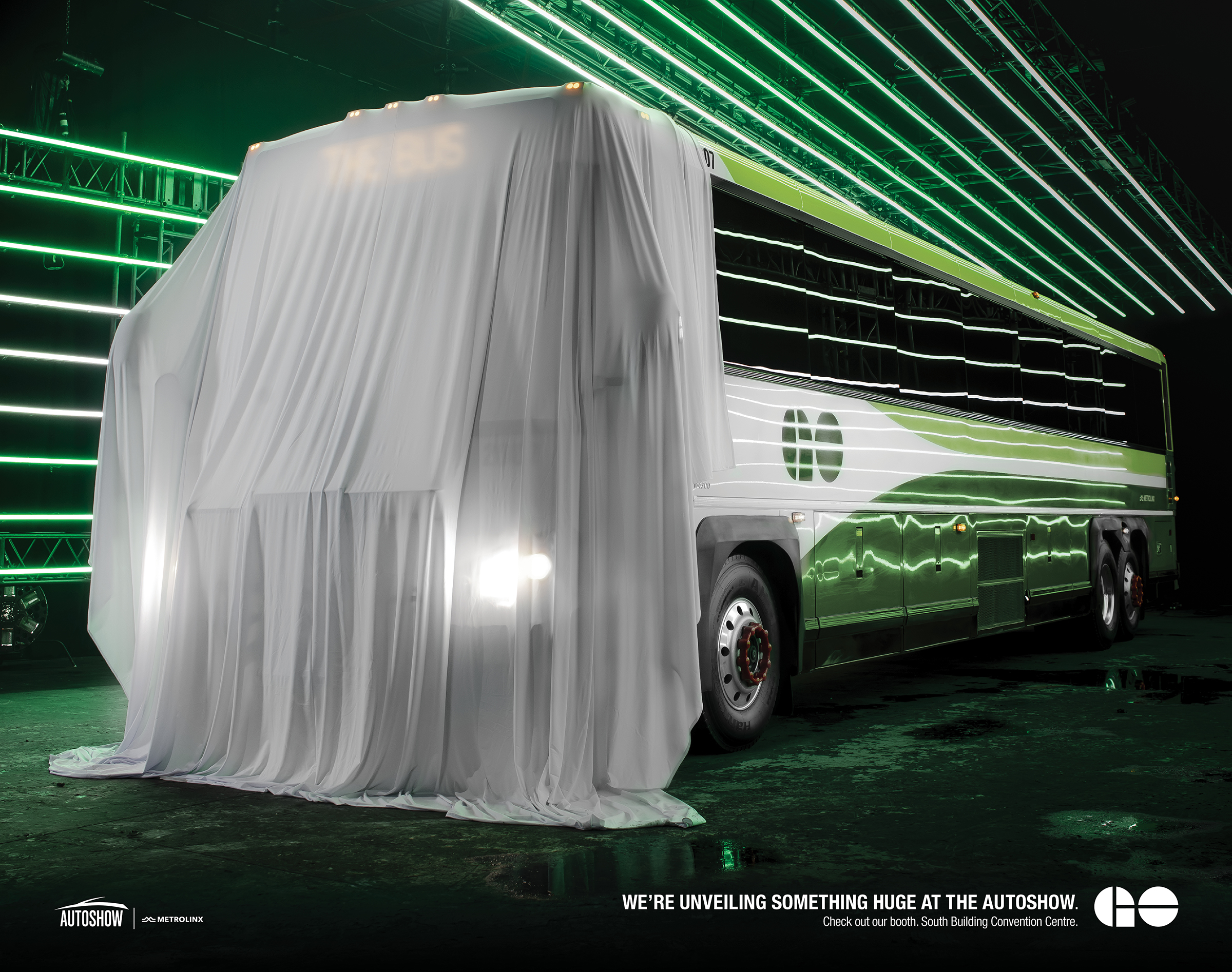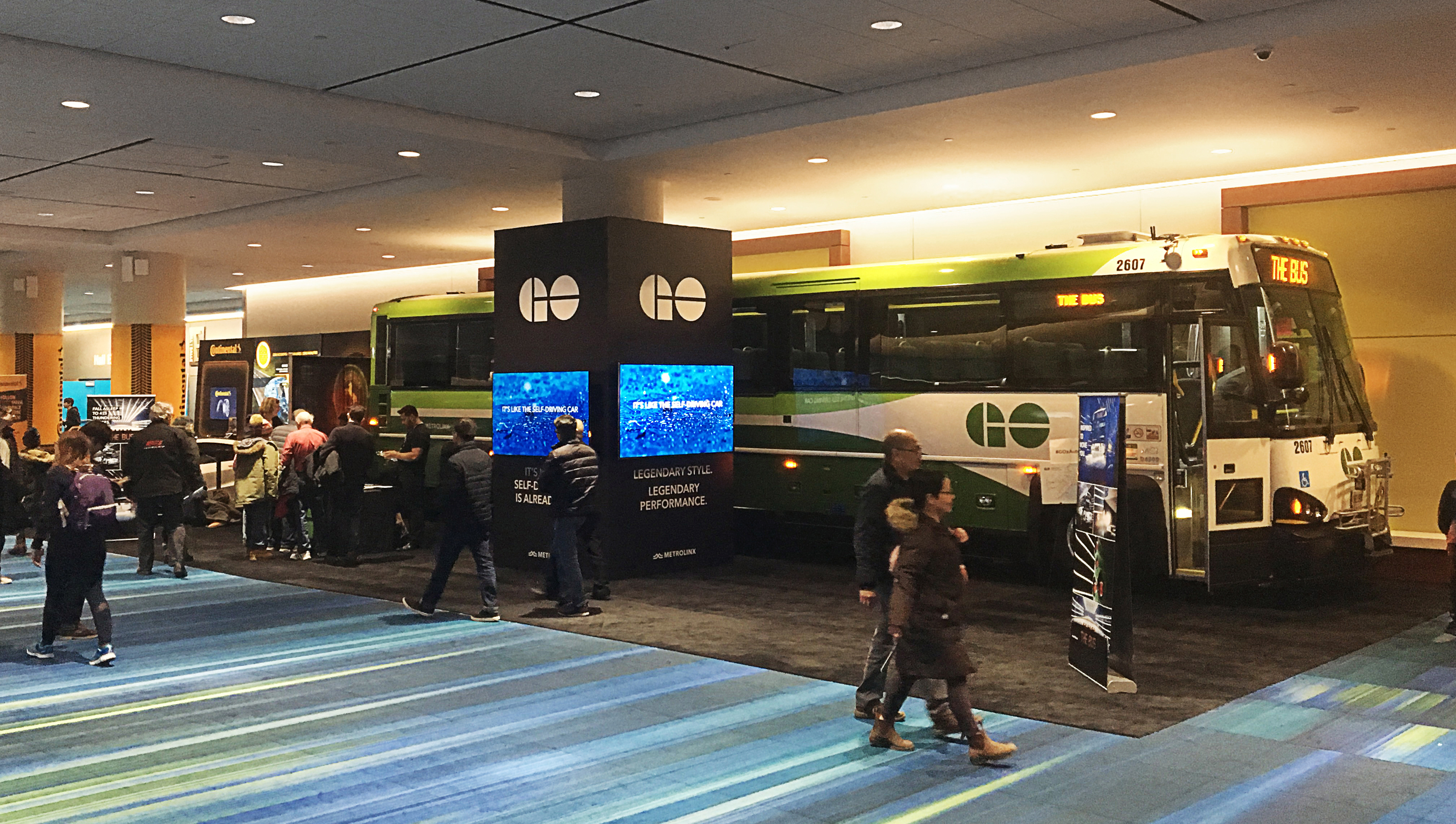2020 Winner
Metrolinx - GO Transit
The Ultimate Ride
BBDO Toronto
SilverBest Experiential Engagement
The Greater Toronto Hamilton area (GTHA) is already the most population-dense part of the province, with expected future population growth of 40.8% by 2041. With infrastructure expansion severely lagging behind this population growth, the typical driving route in Toronto takes up to 2.8x longer than in other major cities. To help improve transportation conditions ranked the worst in North America, Metrolinx needed to get existing drivers to start thinking about transit. This challenge was the key focus for a new, multi-year behaviour change communications strategy for GO Transit. The first application of this new strategy was a challenging objective: convincing Ontarians to take the bus.
The bus seems to hold a stigma that cars – and even the train – doesn’t. It often feels like a last resort for transportation. However, a deep dive into transit perceptions revealed that Ontarians simply didn’t have a compelling reason to take any forms of transit offered by GO. Research with drivers confirmed they were happy with the ease and convenience of taking their cars, despite known downsides like traffic, parking and cost. To truly change perceptions of the bus and transit overall, the agency needed to communicate a real incentive to switch from driving.
Discussions with dedicated drivers and existing GO loyalists revealed a key insight: most people see travel time as ‘lost time’, a necessary sacrifice to get where you need to be. Although drivers felt this way, most GO riders saw their travel time as an opportunity to get some work done, browse the internet, or just have a nap. With busy modern life making time more and more precious, the promise of ‘made time’ when switching to transit was a behaviour change motivator that resonated. But how could the company’s message reach thousands of drivers in the most engaging and budget-efficient way possible? An unexpected but bold decision was made to disrupt the 2019 Toronto AutoShow, in order to reach drivers from all over the GTHA at the show itself, and further that reach by becoming a part of the driver-friendly news cycle surrounding it.
Taking the bus already provides many exciting benefits when it comes to the much-hyped topic of car automation. Tapping into that, the team’s idea was to prompt AutoShow attendees to “Experience the joy of not driving”, promoting the bus using what appeared to be familiar automotive marketing tactics. Instead of focusing on specs and features, the campaign highlighted how extra time not driving could be spent.
The campaign launched with social posts, teasing that the AutoShow was about to be disrupted by GO Transit. Following curiosity around the teaser, a full-length promotional video was released in advance of the show and organically picked up by media outlets reporting on what to expect from the event. With media pickup at its peak, print executions, paid social posts, branded content, and influencer content amplified the hype, driving to a landing page where combo tickets to take the GO and attend the AutoShow could be purchased. At the show itself, a full-sized bus was parked in the convention center, accompanied by a booth with all the expected car show accoutrements: the promotional video, professional photography, a “Meet the driver” session with a real GO bus driver, and ambassadors buffing the bus to a spotlight-ready shine. Guests were welcomed aboard to experience the comfort of its seating, and offered custom t-shirts, highlighting all the things you can do when not driving. The booth attracted over 160,000 attendees and the message was amplified even further as news outlets continued to cover the disruptive activation over the week.
Campaign results were nothing short of spectacular. Although event attendance was flat from 2018, GO combo ticket sales to the AutoShow were up +114%. The campaign garnered 18.4M earned impressions due to interest from broadcast news, local publications, and the internet at large. With comments like “GO Transit wins the internet”, it’s no wonder the engagement rate on Twitter was almost 5x the channel average, and that organic interest in the hero video caused Cost Per View to plummet to $0.04 (vs estimated $0.10). Most importantly, the campaign contribution to ridership and revenue led to a 4:1 ROI on total marketing spend, solidifying the ageny’s strategy as the foundation for GO’s future behaviour change efforts.
Credits
Creative Agency: BBDO Canada
Chief Creative Officer - Denise Rossetto
Chief Creative Officer - Todd Mackie
Associate Creative Director – Guilherme Bermejo
Associate Creative Director – Nick Doerr
Sr. Art Director - Guilherme Bermejo
Sr. Copywriter - Nick Doerr
Sr. Planner - Zach Kula
Account Director - Mark Graham
Account Supervisor - Karrie Kwong
Account Executive - Andrea Stranges
Sr. Project Manager - Sarah Ng
Sr. Print Production Manager - Jennifer Wong
Sr. Production Artist - Jason Rooney
Retouching Manager - Jano Kirijian
Production: Flare BBDO
Executive Producer - Dave Lembke
Director/Cinematographer - Paul Steinberg
Post Production: Ricochet Post
Creative Director - Igor Boros
Sr. Editor - Matthew Dell
Audio Production Manager - Mike Rosnick
Media Company: PHD Canada
Group Account Director - Katarina Kovinjalo
Associate Director, Digital - Karina Gersonde
Account Manager - Scarlett Park
Client Services Assistant - Lulu Qafleshi
PR Company: North Strategic
Sr. Vice President - Jessica Savage
Sr. Account Director - Rob Hogan
Account Manager - Emily Ngai
Client: Metrolinx
Chief Marketing Officer - Mark Childs
Director, Brand & Digital Marketing - Sharyn Byrne-Nearing
Sr. Manager, Brand Marketing - Leslie Millan
Sr. Brand Advisor, GO Transit - Kathy Gorman
Sr. Brand Advisor, GO Transit - Melissa Crowther
Special Programs Officer, Brand & Marketing - Faye Orozco-Ettienne
Brand Advisor, GO Transit - Adam Jagdat
Sr. Manager, Digital Strategy & CRM - Alysha Hille
Sr. Digital Marketing Advisor - Gillian Lanyon



